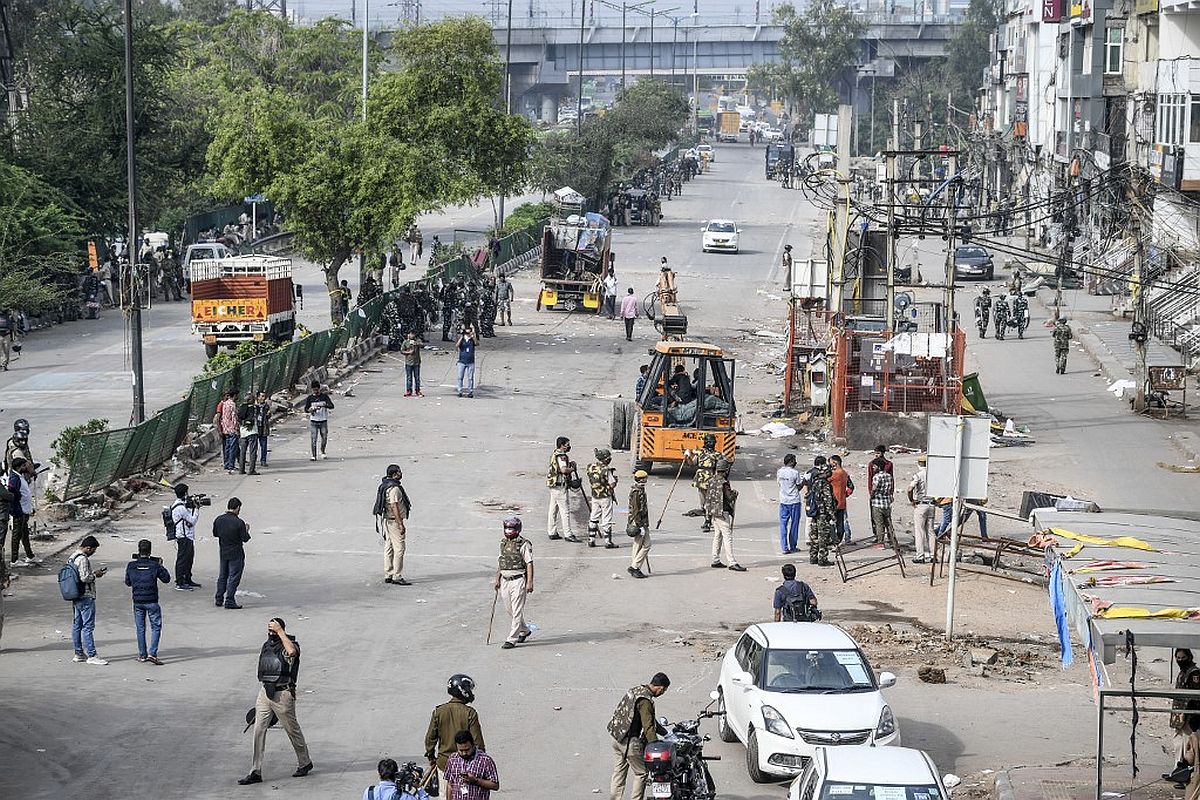Still unexplained
The hunt for the origins of Covid-19 has for the past four years been a tangled web of politics, power struggles, and international finger-pointing.
The 101-day sit-in was a symbol of brave resistance to what was perceived as a discriminatory citizenship Act and the fact that it was led by a bunch of Muslim women of diverse ages lent it a unique character.

Security personnel patrol as a crane is used to clean the streets in Shaheen Bagh area after removing demonstrators continuously protesting against a new citizenship law, while the government imposed a lockdown as a preventive measure against the COVID-19 novel coronavirus in New Delhi. (Photo by Sajjad HUSSAIN / AFP)
The protesters at Shaheen Bagh were on Tuesday removed from their iconic protest site in view of the lockdown announced by the Delhi government to deal with the coronavirus pandemic.
The 101-day sit-in was a symbol of brave resistance to what was perceived as a discriminatory citizenship Act and the fact that it was led by a bunch of Muslim women of diverse ages lent it a unique character. The protest model was replicated in other parts of India during the prolonged people’s movement against the Citizenship Amendment Act (CAA), National Population Register (NPR) and the proposed National Register of Citizens (NRC).
In the wake of the countrywide anti-CAA protests, the government had ruled out implementation of the NRC, but the announcement was received with scepticism. The protest in a small corner of south-east Delhi drew attention worldwide because it remained peaceful throughout, though it was the target of vicious verbal and even physical attacks from right-wing groups. It was dubbed as pro-Pakistani, jihadist and anti-national, but the symbols and graffiti at the protest site, which have been wiped out by the police now, were all deeply nationalistic in nature with the Tricolour being waved and the Constitution constantly being cited.
Advertisement
There were attempts to paint the elderly Muslim women leading the protest, dubbed the daadis and naanis of Shaheen Bagh, as misguided individuals led astray by vested interests and those wanting to break India or the tukde tukde gang, but it soon became clear that this was a movement primarily driven by fear of being rendered stateless, of being thrown out of the only country that they called home. Politicians of different hues tried to cash in on the protest, either by piggybacking on it to oppose the CAA or by violently slamming it to cater to their constituency.
In the run-up to the 8 February Delhi Assembly election, Shaheen Bagh became the favourite punching bag of the BJP with one party MP even warning that the largely women-led protest would result in the rape and abduction of daughters and wives. Union Home Minister Amit Shah, in an election rally in Babarpur, called upon voters to press the electronic voting machines with such anger in favour of the Lotus (symbol of the BJP) that the current would be felt all the way in Shaheen Bagh.
However, the polarising campaign cut no ice with the voters who gave a resounding mandate to the Aam Aadmi Party, which in turn remained strategically silent on the protest. After the death of an infant at the protest site, the Supreme Court stepped in and set up a team of interlocutors to solve the impasse.
By then the people’s movement began to be seen as a largely Muslim campaign. After the onset of coronavirus, many agitators moved away except for a small group of determined women. With the lockdown imposed in Delhi, their removal became a fait accompli. In the process, the protesters perhaps lost some of their moral high ground.
Advertisement